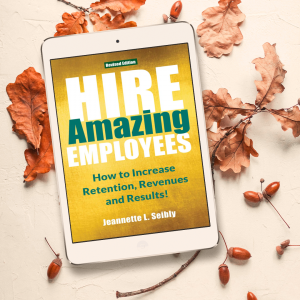
Wanting to be a leader, boss, team member, and good citizen requires trusting yourself to take the right actions and asking for help on what to do to create effective results. What you do or do not do impacts others’ ability to trust you to make win-win-win decisions.
How often have you decided and second-guessed yourself because you didn’t trust yourself? Too often, we realize that if you’d asked the right questions or knew what you now know, you’d have made a better decision. But we didn’t trust ourselves, and every leader has been there.
So, how do we learn to trust ourselves?
Important Traits Required to Trust Yourself
Tell the Truth! We love to rationalize, justify, and lie to ourselves and others that we’re doing our best. Trusting yourself is built by asking for help when you don’t know what to do.
Example: What are you doing to make it difficult for your team members to trust you to achieve intended results or to ask you for help (e.g., gossiping, withholding resources, blaming others, etc.)?
Honor Your Word. This can be difficult for many people, including leaders. But, remember, while you may not believe your word impacts yourself or others, it does … and builds or diminishes trust.
Example: Pick up the phone and talk directly with the right person to solve a team conflict or other brewing issue (e.g., HR, boss, or coach). Then, follow through!
Stop Relying Solely on Intuition or Gut Feelings. Too many people rely on feelings, social media rants, and other lousy information and cite these as intuitive or gut reactions. While scientific studies indicate intuition and gut reactions are important, we can’t rely solely on them when making decisions.
Example: Too many hiring bosses rely on intuition and incorrectly use job fit assessments when selecting the right person for the job. This creates losses in retention, revenues, and results.
Learn the Rules. Many people today flaunt or ignore the rules; they are there for a reason. While they may need changing, complaining about them or signing a petition doesn’t make a difference. Building trust in yourself means being accountable for what you say and do with others.
Example: Are you working within your company’s policies and standard operating procedures? Or do you hope no one notices you aren’t? Learning the rules prevents you from planning your excuses if there is a huge and costly mistake.
Learn to Apologize for Mistakes. Instead of relying on your excuses when you make a mistake, genuinely use these words, “I’m sorry.” “I apologize.” By trusting yourself to apologize for your mistakes, you will build trust with others so they know you take responsibility for your actions.
Example: A woman failed to show up twice in meetings she’d requested, set up with the same person, and then refused to apologize for being a no-show. This is what it looks like when you don’t trust yourself; it encourages others not to trust you.
Be Coachable! The fastest way to learn to trust yourself and encourage others to trust you is to be coachable. While no one can know what to do in every situation, trust yourself to seek the right person to coach you through the best way to resolve issues. Listen and follow the advice of your coach and boss.
©Jeannette Seibly 2023 All Rights Reserved
 Jeannette Seibly is The Leadership Results Coach. With over 30 years as an award-winning international executive coach, speaker, and business author, Jeannette’s clients effectively work through sticky situations and challenging relationships to become positive influencers. Contact Jeannette for a confidential discussion. PS: She’s also a three-time Amazon Best-Selling Author!
Jeannette Seibly is The Leadership Results Coach. With over 30 years as an award-winning international executive coach, speaker, and business author, Jeannette’s clients effectively work through sticky situations and challenging relationships to become positive influencers. Contact Jeannette for a confidential discussion. PS: She’s also a three-time Amazon Best-Selling Author!
A note from Jeannette about trusting yourself: Many leaders like to think they trust themselves. Yet, they don’t. How do you know? Watch their actions, which speak louder than words. Contact me to assess how to trust yourself more for better results.
NOTE: Learning to trust yourself requires making the right choices and the right changes. I love coaching and supporting current and future leaders during critical and strategic situations. Contact me if you want an in-depth, one-on-one hour over 13 weeks. Remember, coaching accelerates your ability to trust yourself. This, in turn, influences your team for unprecedented results that others applaud.
 How’s your leadership development progressing? Are you moving forward … or a tad stuck? Do you need a “nudge” and “clarification?” Want to accelerate and soar your results? Contact me for a confidential conversation.
How’s your leadership development progressing? Are you moving forward … or a tad stuck? Do you need a “nudge” and “clarification?” Want to accelerate and soar your results? Contact me for a confidential conversation.


 This week’s PODCAST: Listen to the Moments of Brilliance: You Don’t Have to Have the Answers! with my guest, Denise Roberts, on
This week’s PODCAST: Listen to the Moments of Brilliance: You Don’t Have to Have the Answers! with my guest, Denise Roberts, on 


 Jeannette Seibly is The Leadership Results Coach. She’s celebrating 30 years as an award-winning international executive consultant, speaker, and coach. Her clients value the listening and positive difference she brings to any conversation. Feel stuck in a sticky situation or in challenging relationships? Want straightforward counsel to blast through it?
Jeannette Seibly is The Leadership Results Coach. She’s celebrating 30 years as an award-winning international executive consultant, speaker, and coach. Her clients value the listening and positive difference she brings to any conversation. Feel stuck in a sticky situation or in challenging relationships? Want straightforward counsel to blast through it?  Leaders need to stretch themselves beyond their perceived limitations for professional growth. It starts with distinguishing your blind spots:
Leaders need to stretch themselves beyond their perceived limitations for professional growth. It starts with distinguishing your blind spots: 
 Hiring the wrong person for an executive or critical position jeopardizes your company. However, this can be preventable when using a strategic selection system. Get essential hiring and selection tips by grabbing the Amazon International Best-Selling Book,
Hiring the wrong person for an executive or critical position jeopardizes your company. However, this can be preventable when using a strategic selection system. Get essential hiring and selection tips by grabbing the Amazon International Best-Selling Book, 
 Are you asking good, job-related interview questions? When hiring new employees or rehiring former ones, ask about their ability to handle mistakes. Why? 90% of new hires fail because they dismiss coaching or advice about how to improve. Get your copy of the newly released,
Are you asking good, job-related interview questions? When hiring new employees or rehiring former ones, ask about their ability to handle mistakes. Why? 90% of new hires fail because they dismiss coaching or advice about how to improve. Get your copy of the newly released, 
 When employees “quietly quit,” it is often due to you quickly hiring on instinct and then slowly firing for poor job skills. It’s time to develop a strategic selection system to improve how and whom you hire! Get your copy of the newly released,
When employees “quietly quit,” it is often due to you quickly hiring on instinct and then slowly firing for poor job skills. It’s time to develop a strategic selection system to improve how and whom you hire! Get your copy of the newly released, 
 Why are employees “quietly quitting?” One of the critical issues is poor job fit for employees! And poor job fit for their bosses who got promoted without the skills to be leaders. It’s time to develop a strategic selection system to improve your hiring results! Get your copy of the newly released,
Why are employees “quietly quitting?” One of the critical issues is poor job fit for employees! And poor job fit for their bosses who got promoted without the skills to be leaders. It’s time to develop a strategic selection system to improve your hiring results! Get your copy of the newly released, 